8 October
1515 - Birth of Lady Margaret Douglas, Countess of Lennox. Margaret was the daughter of Margaret Tudor, Queen Dowager of Scotland and sister of Henry VIII, and Archibald Douglas, 6th Earl of Angus.
1536 – The commons, i.e. the people, approved the petition of grievances drawn up by the rebels of Horncastle, Lincolnshire.
1549 – Edward Seymour, Duke of Somerset and Lord Protector, was proclaimed a traitor by the King's Privy Council.
1561 – Baptism of Edward Wright, mathematician and cartographer, at Garveston in Norfolk. Wright is known for his treatise “Certaine Errors in Navigation” (1599), his work on Mercator's map projection and his translation of John Napier's 1614 Mirifici logarithmorum canonis descriptio into English.
1594 – Death of Ellis Price (Prys), scholar and administrator. Price served Henry VIII as a Monastic Visitor in Wales 1535, Commissary-General and Chancellor of the diocese of St Asaph, and as an administrator in Wales after the “Acts of Union”. He also later served as Sheriff of Merioneth, Anglesey, Caernarfon, and Denbigh, and a member of the council in the Marches of Wales.
9 October
1514 - The eighteen-year-old Mary Tudor, sister of Henry VIII, married the fifty-two-year-old King Louis XII of France at Abbeville.
1529 – A writ of praemunire was filed against Cardinal Thomas Wolsey in the court of King’s Bench.
1536 – Pilgrimage of Grace: The rebels of Horncastle, Lincoln, dispatched their petition of grievances to the King and also north into Yorkshire.
1547 – Baptism of Miguel de Cervantes, author of Don Quixote, in Alcalá de Henares, Spain. His actual birthdate is unknown.
1573 – Death of Sir Thomas Wroth, courtier, politician and landowner. Wroth served Edward VI as a Gentleman of the Privy Chamber and was with him when he died.
1604 – Death of Sir William Peryam, Judge, at Little Fulford, near Credington in Devon. He was laid to rest at Holy Cross Church. Peryam was on the commissions at the trials of Mary, Queen of Scots, the Earl of Arundel, the Earl of Essex and Sir John Perrot, and served as Chief Baron of the Exchequer from 1593 until his death.
10 October
1505 (10th or 11th) – Death of William Barons (Barnes), Bishop of London and former Master of the Rolls. He was buried at St Paul's Cathedral.
1530 – Death of Thomas Grey, 2nd Marquis of Dorset, magnate, soldier and courtier. He was buried at Astley Collegiate Church in Warwickshire. Grey's offices included Constable of Warwick Castle and of Kenilworth Castle, and he also acted as Chief Answerer at the marriage of Prince Arthur and Catherine of Aragon. Grey was also the grandfather of Lady Jane Grey.
1549 – Edward Seymour, Duke of Somerset and Lord Protector, was ordered to leave Windsor Castle and to give himself up. He had moved there with the young Edward VI on the 6th October, from Hampton Court Palace, after learning that his protectorship was in danger.
1562 - The twenty-nine year-old Queen Elizabeth I was taken ill at Hampton Court Palace, with what was thought to be a bad cold. However, the cold developed into a violent fever, and it became clear that the young queen actually had smallpox. Click here to read more.
1588 – Funeral of Robert Dudley, Earl of Leicester. He was buried in the Beauchamp Chapel of the Collegiate Church of St Mary, Warwick.
11 October
1521 – The title of Fidei Defensor, “Defender of the Faith”, was conferred by Pope Leo X on Henry VIII. This was a reward for Henry VIII writing his pamphlet Assertio septem sacramentorum adversus Martinum Lutherum (“Declaration of the Seven Sacraments Against Martin Luther”), defending the Catholic Church against the works of Martin Luther.
1531 – The Battle of Kappel and the death of Huldrych Zwingli, the Swiss Reformer, at the battle.
1532 – Henry VIII and Anne Boleyn left England for Calais, where Anne was treated as Henry VIII’s Queen and consort.
1537 – Solemn procession at St Paul’s to pray for the Queen, Jane Seymour, who was in labour, a labour which lasted over 30 hours. Charles Wriothesley wrote of how the procession was made up of “all the orders of friars, preistes, and clarkes… the major and aldermen, with all the craftes of the citie” and that it was “donne to pray for the Queene that was then in laboure of chielde.”
1537 – Traditional date given to the birth of Lady Jane Grey. It is now thought that she was born in spring 1537, “before the end of May” (Leanda de Lisle).
1542 - Sir Thomas Wyatt the Elder, poet and diplomat, died at Sherborne in Dorset. He had been complaining of severe headaches since 1539. Wyatt was just thirty-nine years old at his death, but his poetry, and that of his friend, Henry Howard, Earl of Surrey, is still enjoyed the world over, although the majority of his work was not published in his lifetime. Literary critic, and author of two books on Wyatt, Patricia Thompson, calls Thomas Wyatt “the Father of English Poetry” and Wyatt is known for introducing the sonnet into English.
He was laid to rest at Sherborne Abbey. His plain tomb can be found in the Wykenham Chapel of the Abbey.
1549 – Arrest of Edward Seymour, the Duke of Somerset, Lord Protector of the Realm and Governor of the King’s Person. Click here to read more.
1551 – John Dudley, Earl of Warwick, became the Duke of Northumberland and Henry Grey, father of Lady Jane Grey, became the Duke of Suffolk.
1558 – Death of Paul Bush, Bishop of Bristol, at Winterbourne. He was buried in Bristol Cathedral.
1982 – The raising of the Mary Rose, Henry VIII's ship, from the seabed just off the coast off Portsmouth where she had lain since she sank on 19th July 1545.
12 October
1537 - Birth of Edward VI, son of Henry VIII and Jane Seymour, at Hampton Court Palace. Click here to read more.
1555 – Birth of Peregrine Bertie, 13th Baron Willoughby of Willoughby, Beck, and Eresby, at Wesel in Cleves. Bertie was the son of Richard Bertie and his wife, Katherine (née Willoughby), Duchess of Suffolk and widow of Charles Brandon, Duke of Suffolk. Bertie was born while his Protestant parents were in exile during Mary I's reign.
1555 – Assassination of Lewis Owen, member of Parliament and administrator in Wales, on Dugoed Mawddwy, a mountain pass. He had become unpopular after supporting new legislation in Wales, and his assassination is viewed as revenge for his campaign, with John Wyn ap Meredydd of Gwydir, against outlaws. It had resulted in around eighty hangings.
1598 – Death of Thomas Stapleton, Roman Catholic theologian, at Louvain. He was buried there, at St Peter's Church. Stapleton's works included translations, commentaries on parts of the Bible and anti-Calvinist treatises such as Antidota.
1616 – Death of Henry Cavendish, soldier and son of Sir William Cavendish and his third wife Elizabeth (Bess of Hardwick). He was buried at Edensor in Derbyshire.
13 October
1499 - Birth of Queen Claude of France, wife of Francis I, in Romorantin-Lanthenay. She was the eldest daughter of Louis XII of France and Anne of Brittany.
1534 – Alessandro Farnese became Pope Paul III.
1549 – The Council abolished Edward Seymour, Duke of Somerset’s Protectorate, and his membership of the Council.
1579 – Death of Sir William Drury, soldier and Lord Justice of Ireland, at Waterford, during Desmond's Rebellion. He was buried in Dublin, at St Patrick's Cathedral.
1591 – Death of Sir Edward Waterhouse, administrator, at his estate, Woodchurch in Kent. Waterhouse served Elizabeth as Chancellor of the Exchequer and of the Green Wax in Ireland from October 1586 to October 1589.
14 October
1536 – Pilgrimage of Grace. By 14th October the uprising in the north had turned into a proper rebellion. On 13th October, Lord Darcy had reported to Henry VIII that the East Riding, West Riding, North Riding and “all the commons of Yorkshire” were “up” in rebellion, and on 14th October William Haryngton, Mayor of York, and Sir George Lawson, wrote to the King asking for aid because “the commons… have rebelliously assembled to take York”.
1559 – Death of John Williams, Baron Williams and Lord President of the Council in the Marches of Wales, at Ludlow Castle. He was buried in Thame Church.
1565 – Statesman and poet, Thomas Chaloner, died at his home in Clerkenwell, London. During the reign of Elizabeth I, he acted as the English ambassador to Ferdinand I, Holy Roman Emperor, in 1558, and then ambassador to Philip II in the Low Countries, and then Spain between 1559 and 1561. Chaloner was a great friend of William Cecil, Lord Burghley. In 1564, his health began to fail, and he was allowed to return home. He died there on the 14th October 1565, aged forty-four.
1586 - The trial of Mary, Queen of Scots began at Fotheringhay Castle in Northamptonshire. Click here to read more.
1593 – Death of Arthur Grey, 14th Baron Grey of Wilton, soldier and Lord Deputy of Ireland, at his home of Whaddon in Buckinghamshire. He was buried there. Grey had a reputation for radical Protestantism.
1596 – Death of John Coldwell, Bishop of Salisbury, at Salisbury. He was buried in the cathedral, in the grave of Bishop Wyvil due to his state of poverty.

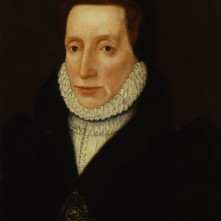
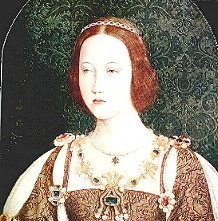

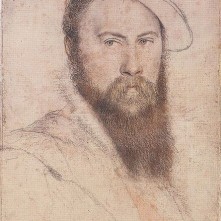

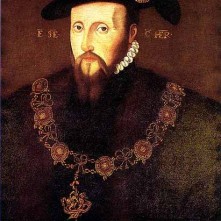

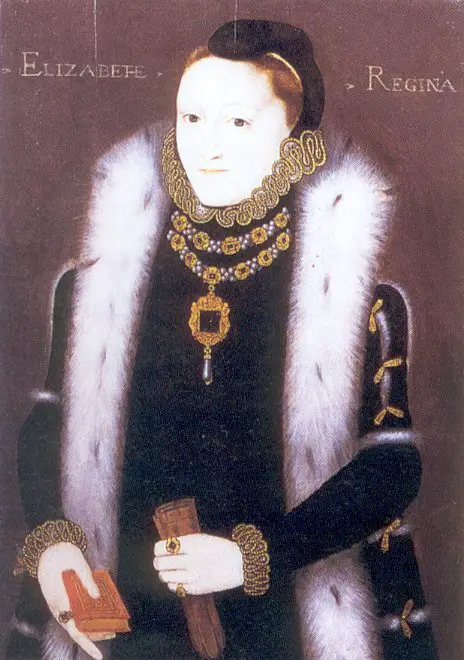
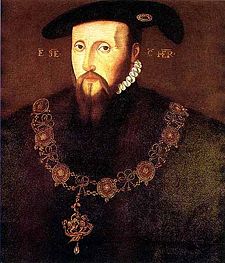

Leave a Reply